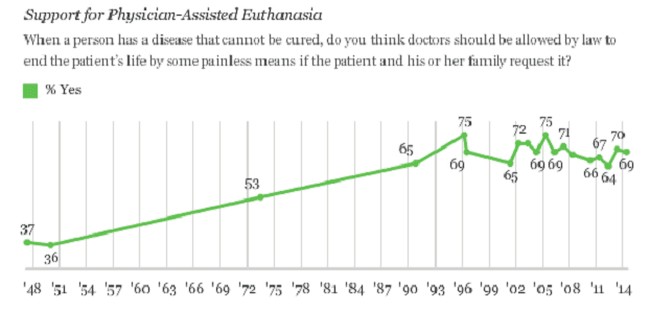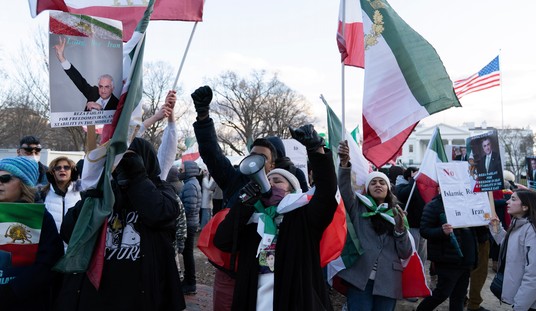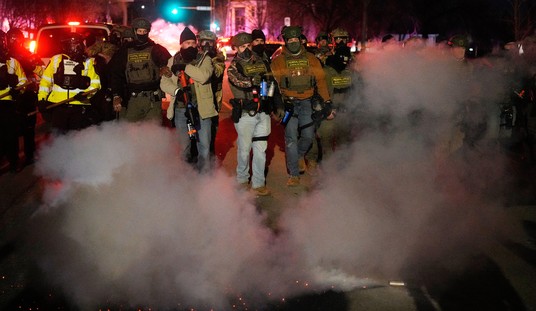Gallup reports that 69% of Americans answer yes to the question:
When a person has a disease that cannot be cured, do you think doctors should be allowed by law to end the patient’s life by some painless means if the patient and his or her family request it?
At first blush, the idea that a euthanasia should be allowed seems to follow a logic. If a person is suffering and wishes to end that suffering then who has the right to tell them no? It is their life, right? Only some troglodyte Bible thumper could possibly deny a person the simple mercy of ending their suffering. In this way it is no different than any other social innovation that has come down the pike over the past 60 or so years. It is a profound evil traveling under the guise of modernism and compassion.
Flashback
I’m reluctant to use any historical example originating in Germany between 1933 and 1945 but in the Nazi regime is a rich source of what happens when science and technology are no longer governed by faith and morals. The case of Gerhard Kretschmar, also known as Child K, is a prime example. Gerhard Kretschmar was born blind, with no legs, and with only one arm. In the Germany of 1939 euthanasia was illegal, and when the father asked the family doctor to kill his Gerhard he was told no.
The baby’s father, Richard Kretschmar, from the small Saxony town of Pomssen, near Leipzig, had written to Hitler’s office in early 1939 asking for permission to kill his blind and deformed son.
In his testimony, Dr Brandt said: “The father of a deformed child wrote to the Fuhrer with a request to be allowed to take the life of this child or this creature. Hitler ordered me to take care of this case. The child had been born blind, seemed to be idiotic, and a leg and parts of the arm were missing.”
The boy is believed to have been given luminal in the form of a dissolving tablet, causing unconsciousness and death after three to five days. The drug was later used on other victims of the euthanasia programme.
Only a month after the baby’s killing, in August 1939, Hitler’s Interior Ministry issued the decree ordering the systematic annihilation of mentally and physically disabled children.
The new report contains the most comprehensive analysis yet of Nazi records, including the hundreds of hospitals and clinics that took part in the Third Reich’s programme to wipe out the lives of people considered “unworthy of living”. It contains names and case details of 200,000 of the programme’s estimated 275,000 victims.
As they say, bad cases make bad law. While Hitler’s response to the father might be taken as a specific mercy, it didn’t take the technocrats of the Third Reich to realize the possibilities. What was forbidden became voluntary. What was voluntary soon became mandatory.
Hitler instructed Brandt to proceed in the same manner in similar cases.[24] The Reich Committee for the Scientific Registering of Hereditary and Congenital Illnesses was established on 18 August 1939, three weeks after the killing of the mentioned boy. It was to prepare and proceed with the registration of ill children or newborns identified as defective. Secret killing of infants began in 1939 and increased after the war started. By 1941, more than 5,000 children had been killed.[25]
Hitler was in favour of killing those whom he judged to be “unworthy of life“. In a 1939 conference with health minister Leonardo Conti and the head of the Reich Chancellery, Hans Lammers, a few months before the euthanasia decree, Hitler gave as examples of “life unworthy of life:” severely mentally ill people who he believed could only be bedded on sawdust or sand because they “perpetually dirtied themselves”, or who “put their own excrement into their mouths, eating it and so on”.[26]
Both his physician, Dr. Karl Brandt, and the head of the Reich Chancellery, Hans Lammers, testified after the war that Hitler had told them as early as 1933, at the time the sterilisation law was passed, that he favoured killing the incurably ill, but recognised that public opinion would not accept this. In 1935, Hitler told the Reich Doctors’ Leader, Dr. Gerhard Wagner, that the question could not be taken up in peacetime: “Such a problem could be more smoothly and easily carried out in war”, he said. He intended, he wrote, “in the event of a war radically to solve the problem of the mental asylums”.[27] The initiation of war also provided Hitler with the possibility of carrying out a policy he had long favoured.
The Slippery Slope
To show the possibilities of euthanasia, the Netherlands is the best case study. Doctor assisted suicide became permissible in the Netherlands in 1981 as the outcome of a court decision. Since that time the number of cases has steadily climbed.
The number of people opting to die by euthanasia rose by 13% last year to 4,188, according to the five regional committees charged with ensuring the legal conditions for assisted suicide are met. Euthanasia requests have risen steadily since 2006 when 1,923 people applied for assisted suicide.
This represents 3% of all deaths. For context, if that number was extrapolated to the United States it would comprise about 76,000 deaths—over twice the number killed in motor vehicle accidents and over 7 times the number killed with firearms.
Since euthanasia was adopted as a voluntary action, it has become not so voluntary for some. Both the Netherlands and Belgium allow for children under the age of 12 to be euthanized with the approval of doctors and, for now, the parents. But consent as a prerequisite is slowly fading:
It gets worse: Repeated studies sponsored by the Dutch government have found that doctors kill approximately 1,000 patients each year who have not asked for euthanasia. This is not only a violation of every guideline, but an act that Dutch law considers murder. Nonvoluntary euthanasia has become so common that it even has a name: “Termination without request or consent.”
Despite this carnage, Dutch doctors are very rarely prosecuted for such crimes, and the few that are brought to court are usually exonerated. Moreover, even if a doctor is found guilty, he or she is almost never punished in any meaningful way, nor does the murderer face discipline by the Dutch Medical Society. For example, in 2001, a doctor was convicted of murdering an 84-year-old patient who had not asked to be killed. Prosecutors demanded a nine-month suspended probation (!), yet even this brush — it can’t even be called a slap — on the wrist was rejected by the trial judge who refused to impose any punishment. Not to worry. The appellate court decided to get tough: It imposed a one-week suspended sentence on the doctor for murder.
Even such praising with faint damnation isn’t enough for the Dutch Medical Association. As a result of this and the handful of other non-punished murder convictions of doctors who engaged in termination without request or consent, the organization is lobbying to legalize non-voluntary euthanasia. Along these same lines — and demonstrating that the culture of death recognizes no limits — the day after the Dutch formally legalized euthanasia, the country’s minister of health advocated the provision of suicide pills to the elderly who do not qualify for killing under Dutch law.
Lest we think the Dutch experience is a fluke, let us now turn our attention to Belgium. Only one year ago the Belgians legalized Dutch-style euthanasia under “strict” guidelines. As with the Netherlands, once unfettered, the euthanasia culture quickly began to swallow Belgium whole. Moreover, the slide down the slope has occurred at a greatly accelerated pace. It took decades for the Dutch euthanasia to reach the current morass. But Belgian euthanasia went off the rails from day one: The very first reported killing — that of a man with multiple sclerosis — violated the legal guidelines (not that anything was done about it). Moreover, while 203 people were officially recognized as having been euthanized in Belgium during the first year of legal practice, most euthanasia deaths were not reported (a violation of the law). The actual toll is probably closer to 1,000.
We don’t know the exact magnitude of involuntary euthanasia but a study by Canadian doctors of euthanasia in Belgium found that over half of the 500 cases they examined were carried out without the express consent of the “patient.” Ominously, Belgium seems to be well on the way to formalizing the combination of euthanasia and organ harvesting:
In the years since, Belgian doctors have expanded the kill-and-harvest agenda, even promoting it at medical symposia. For example, one group of advocates created a PowerPoint presentation, arguing that unlike, say, cancer patients, euthanizing people with serious neuromuscular diseases who want to die and donate should be accepted because such patients have “high quality” organs.
Most recently, four cases of euthanasia followed by organ harvesting were reported in the journal Applied Cardiopulmonary Pathophysiology. Note, three of the cases involved patients with neuromuscular disabilities, and one was a mentally ill patient.
The Environment
When Sarah Palin first talked about “death panels” in conjunction with Obamacare, she was hooted at but since that time we’ve seen that she was truly prescient:
Think that’s an alarmist scenario to scare you away from supporting “death with dignity”? Wrong. That is exactly what happened last year to two cancer patients in Oregon, where assisted suicide is legal.
Barbara Wagner had recurrent lung cancer and Randy Stroup had prostate cancer. Both were on Medicaid, the state’s health insurance plan for the poor that, like some NHS services, is rationed. The state denied both treatment, but told them it would pay for their assisted suicide. “It dropped my chin to the floor,” Stroup told the media. “[How could they] not pay for medication that would help my life, and yet offer to pay to end my life?”
Now that Obamacare is a reality, many pro-euthanasia activists are hailing it as opening the gateway. For instance, from Salon and The opposite of “death panels”: How the ACA could lead to a better way of dying:
Currently only three states have Death With Dignity laws – a surprisingly low number given that there isn’t a one among the other 47 in which somebody isn’t dying right now. Could the Affordable Care Act change that? Peg Sandeen, executive director of the National Death With Dignity Center, speculates: “I think the ACA is going to change how we access healthcare and that change is going to come slowly. What I hope it means is that people have access to a wide span of options across the health spectrum.”
That’s a spectrum that must reflect its true and full range, including not just screening and treatment but end of life care. As Sandeen notes, “Our opponents say that it’s a slippery slope. But it’s interesting that people who access us have access to good quality care.” The data bears it out – over a 15-year span, 98 percent of terminally ill Oregonians who’ve exercised their state’s right to die with dignity have had insurance. In 2012, all of them did. Opponents of compassionate end of life care cloak their rhetoric in the scary language of “death panels” and “culture of death” and “assisted suicide”; they warn darkly that insurance companies will suggest patients kill themselves as a cost-cutting measure. But the reality sure seems to be that exercising the right to a peaceful death is a choice made not by individuals who are marginalized or desperate, but those who have access to quality care.
In case you missed it, the author is extolling the virtues of Oregon’s system. That is the one we talked about earlier, you know, the one where they tell you to commit suicide by form letter.
The Future
While the poll numbers, themselves, are unremarkable taken in the context of responses over the life of this survey, what makes them remarkable is that we live in a time in which those numbers actually have meaning.
Twenty years ago, it didn’t matter if you supported euthanasia if you lived in Oregon because it was illegal. Today it matters because the State is withdrawing medical care and telling you that you can go kill yourself, and they aren’t being snarky. In Europe, euthanasia is being expanded to include people who are chronically depressed. As we’ve shown, in Europe a significant number of euthanasia “patients” in Europe are snuffed without their consent. As the government controls more and more of health care, then the financial pressures will increase to kill the old, the infirm, the senile, the chronically ill of all ages, persons carrying genetic diseases like Huntington’s Disease. As the process gains social acceptance, it doesn’t take a genius to see the potential abuses as the elderly are coerced into euthanasia for the benefit of the living.















Join the conversation as a VIP Member